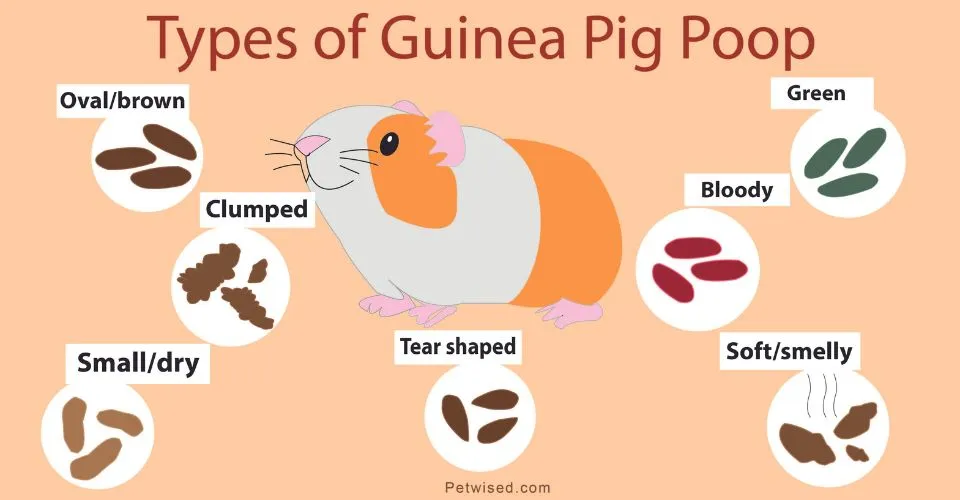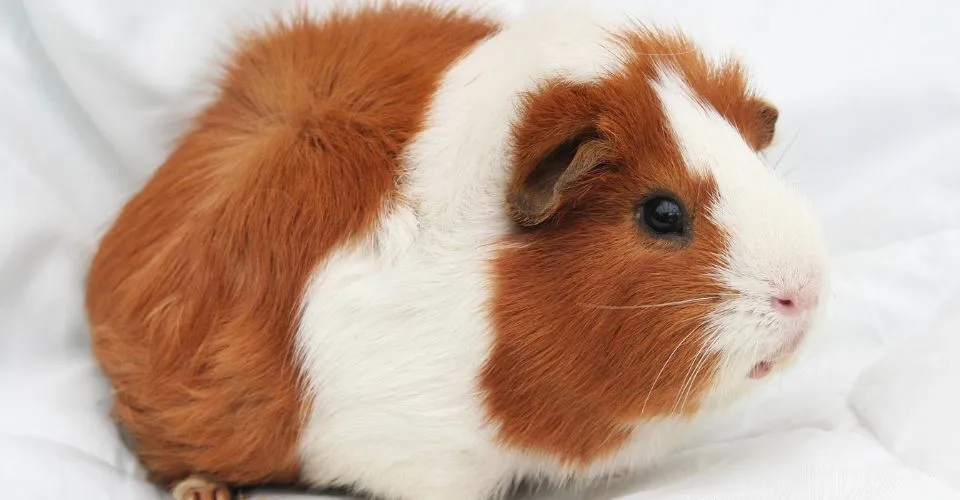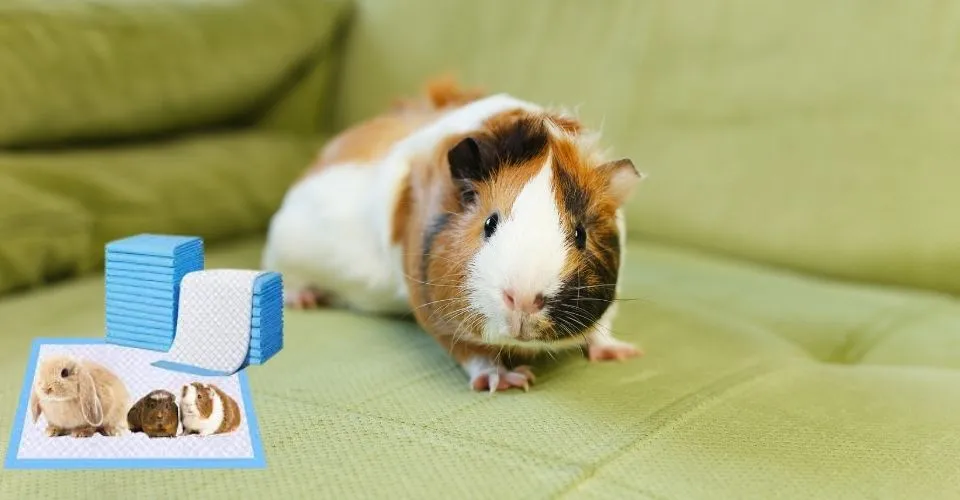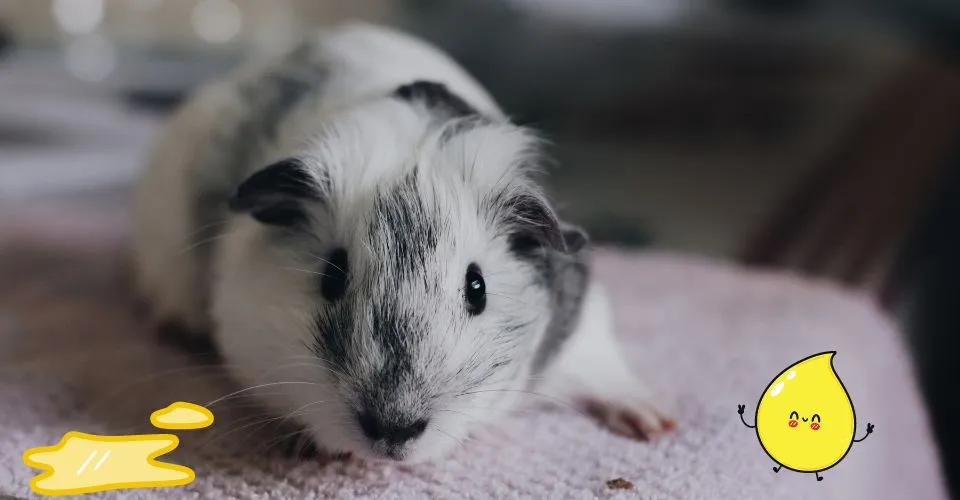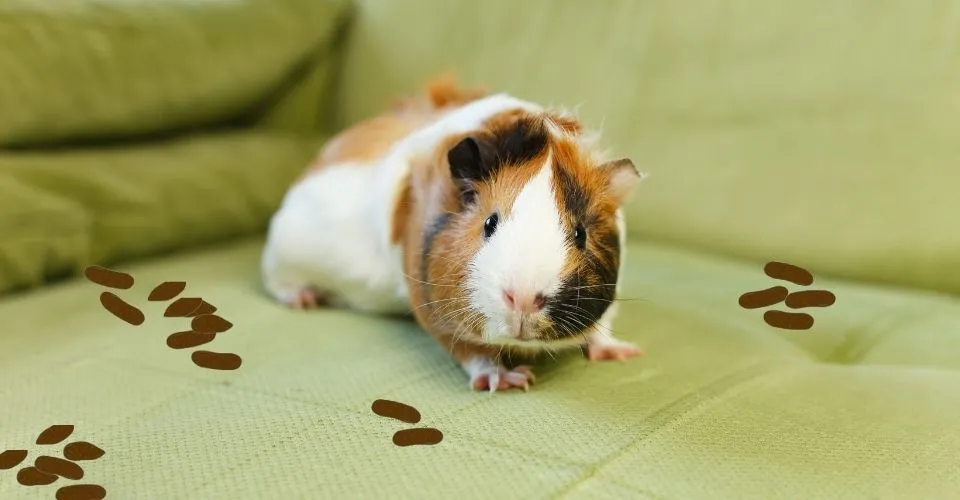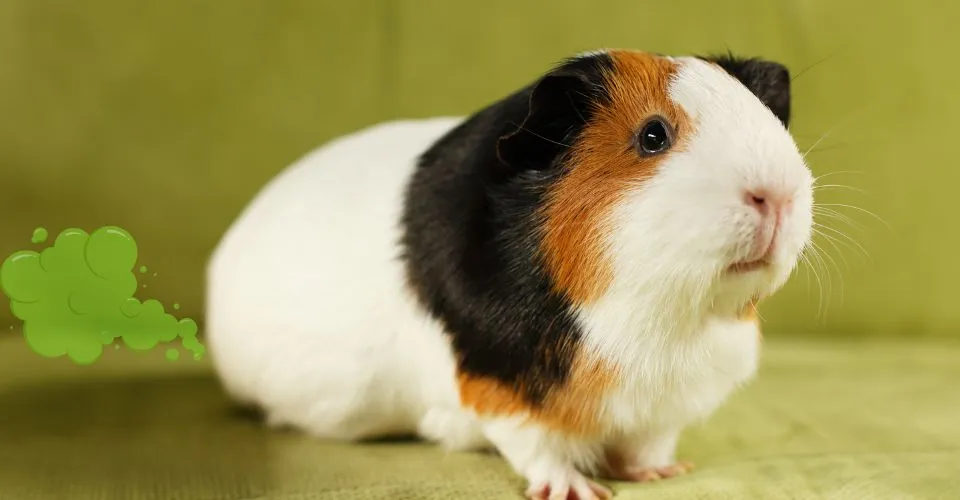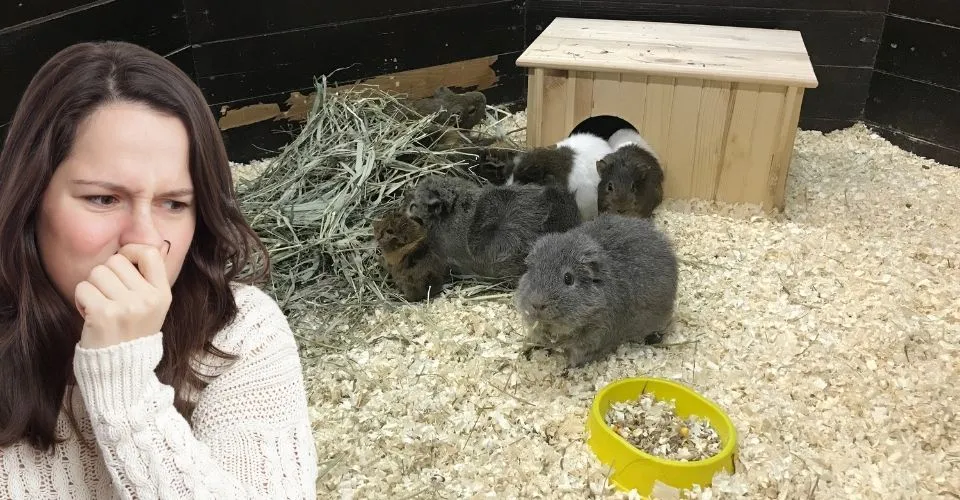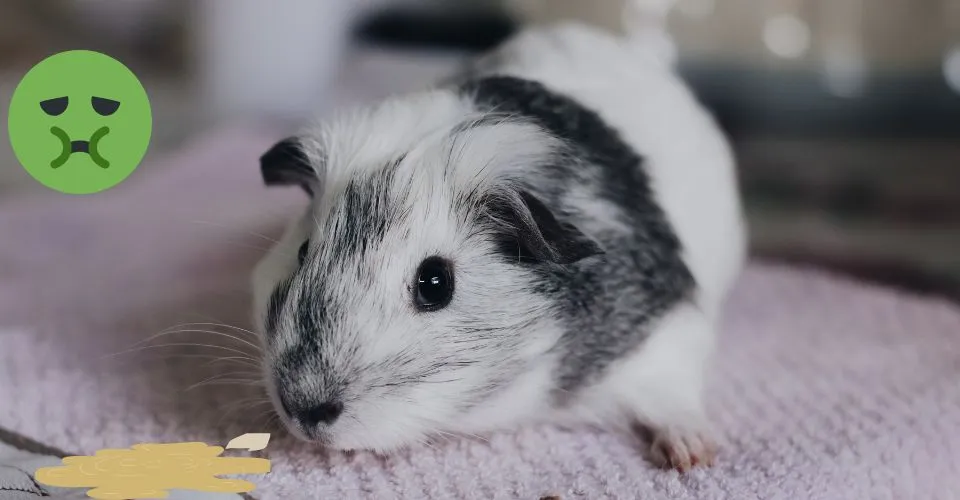Guinea pig nails are always growing. While in the wild guinea pigs’ nails are kept at proper length as they file down naturally when guinea pigs walk on rough surfaces; pet guinea pigs need regular nail trims. The frequency may vary from guinea pig to guinea pig but on average, you should cut guinea pig nails at least once every month.
When you slack on cutting guinea pig nails, they may overgrow, resulting in a lot of problems. Overgrown nails often curl and start to grow into the guinea pig skin, which is extremely painful for guinea pigs.
Besides that, longer nails are also more susceptible to getting caught in something and ripping off, causing immense pain to the guinea pig. This often results in blood coming out of the nail bed. The open wound also makes guinea pigs susceptible to infections like bumblefoot.
If your guinea pig nail got ripped off and there is blood coming out of the nail bed, you should stop panicking. Instead, you should pick your guinea pig up and stop the bleeding ASAP. And for the next few weeks, you will have to pay special attention to keeping the cage clean and guinea pig feet dry to ward off the risk of infection. The torn guinea pig nail would take a few months to fully grow back. You would start seeing signs of nails growing back from the nail bed, within a month.
If you don’t know how to stop the bleeding or how to go about keeping the risk of infections at bay, continue reading. In this article, we are going to discuss all about it.
My Guinea Pig Nail Got Ripped Off! What Can I Do?
Watching your guinea pig nail break off and bleed like crazy is a nightmare. But it is not as worse as it may look. If you timely stop the bleeding and keep the wound clean and dry, it will grow back without any issues. Here is what you should do in case of a nail injury in guinea pigs.
- Stop the bleeding ASAP—Excessive bleeding could weaken your guinea pig. Therefore, it is crucial that you immediately stop the bleeding. Here is how you can stop guinea pig nail bleeding:
- First of all, don’t panic! Your piglet won’t bleed to death. He is going to be alright.
- Apply styptic powder at the point of bleeding. You can also use a styptic pencil for this purpose. It might sting a bit but it works wonders.
- Dab the point of injury with corn starch or flour, if the styptic powder is not available.
- Press and hold the bleeding nail into a bar of soap or beeswax for a while.
- If the injury is minor, simply apply pressure to the wound for a couple of minutes and it would stop bleeding.
- You can also use chapstick (lip balm). Sounds odd but it works like a charm.
- Make sure the guinea pig has stopped bleeding, before putting your piggy into the cage again.
- Clean the wound—It would minimize the risk of infection.
- You can clean the wound by using a small amount of cleaning agents like hydrogen peroxide and Betadine scrub.
- You can also gently wash the wounded area with lukewarm salty water (1 tablespoon of salt in one-liter water). Be gentle while cleaning the wound, you do not want to make it start bleeding again.
- In case, the wound starts bleeding again, you can use the measures discussed above to stop the bleeding.
- Keep the nail bed dry—it would minimize the risk of infection and promote healing
- Immediately after cleaning the wound, you should dry it.
- The moistened wound would encourage bacterial growth, increasing the risk of bacterial infections like bumblefoot.
- Put the guinea pig on a fleece or pee pad—it would make you observe the wound more clearly.
- A clean and dry fleece would help keep the wound dry and clean.
- Guinea pig pee pad would soak up all the guinea pig urine and help keep it clean and dry.
- It would also help you observe the wound and immediately spot if there is any sign of infection or bleeding again.
- Keep your guinea pig in isolation for a day or two—it would ensure that the toenail does not get hurt during playtime with other piglets.
- While it is completely fine to put the guinea pig back in its cage with other guinea pigs after an hour or two has passed and the bleeding has stopped completely.
- For better healing and to reduce the risk of accidents while playing with other guinea pigs, you should house your guinea pig separately for a day or two, if possible.
- Find how your guinea pig got its nail ripped and deal with it—to ensure that it never happens again—at least not for the same reasons.
- The main reason behind toenail injuries is overgrown nails. So make sure that you are trimming your guinea pig nails regularly—at least once a month.
- The guinea pig nail might have gotten stuck in the bedding, toys, hide boxes, or guinea pig pee pads. It might have gotten caught in the wiry bottom or sidewalls of the cage. Your guinea pig might have stood against the wall with its forelegs into the wall so that its nail got stuck and on getting down it got ripped off.
- It might be the guinea pig hay feeder. On a guinea pig forum, one guinea pig owner shares the incident of his piglet’s nail getting ripped off by getting stuck in the wiry mesh of the bin feeder.
Risk Associated With Broken Nails In Guinea Pigs
No matter how careful you are, the risk of a guinea pig getting its nail ripped is always there. The risk is higher among guinea pigs that are active and are always running, jumping, and twisting around. Guinea pigs with overgrown nails are also at a higher risk of nail injuries. Besides being a pain itself, a broken nail could be a breeding ground for bacterial infections like bumblefoot.
Bumblefoot in Guinea Pigs
Bumblefoot (pododermatitis) is a bacterial infection and is a common occurrence in guinea pigs. It mostly occurs in guinea pigs with overgrown nails as they curl and start to grow inside the footpad, wounding guinea pigs and making room for bacteria to infest and infect. Similarly, the risk of bumblefoot is also higher in guinea pigs with broken nails. The wound and naked nailbed increase the risk of bacterial growth, which leads to the development of bumblefoot.
You can easily avoid bumblefoot in the guinea pig by trimming their nails regularly and keeping the wound clean and dry in case of a broken nail or bleeding during a nail trimming session.
My Guinea Pig Nail Got Ripped Off: FAQs
How to Avoid Broken Nails in Guinea Pigs?
Here are a few tips to help you avoid broken nails in guinea pigs:
- Regularly trim your guinea pig nails. How regular may vary from guinea pig to guinea pig but every guinea pig should get a nail trim at least once a month.
- While trimming nails, make sure that there are no sharp edges that may get stuck with the fleece, etc.
- Avoid wire bottoms. You should use a proper substrate or quality bedding to cover the wire bottom of the cage.
- Make sure that all of the guinea pig toys, hides, and feeders don’t have a wire structure. Some bin feeders have wire mesh to allow the dirt from hay to drop off. Avoid such feeders.
- Whenever you spot your guinea pig experiencing difficulty walking, or any change in walking patterns, pick them up and inspect for a possible injury on the footpads.
How Long Does a Torn Guinea Pig Nail Grow Back?
It depends mostly on the guinea pig’s diet and overall health. However, you will start observing the signs of new nails growing from the nail bed within a month. A torn guinea pig nail may take a few months—up to 6 months—to fully grow back. The regrown guinea pig nail might be thicker than the original nail. You should not slack on and let the nail grow long again, you should timely trim it to the proper length.
Are Antibiotics Necessary for Ripped Nail in Guinea Pigs?
Vets may or may not put your guinea pig on the antibiotic. If the vet does see any sign of a bacterial infection, they may ask you to use Bactrim like Trimeth, silver sulfadiazine cream, etc. You should never decide to use an antibiotic on your own. Always get an opinion from an expert veterinarian.
Common Signs of Infection • Swollen injury area • Soreness and redness of the toe • Discharge from the paw, or nail bed • Difficult walking • Foul smell
You should closely monitor your guinea pig for the above-mentioned signs of infection for at least 48 hours. If you see any of the signs, you should immediately get your guinea pig to a veterinarian.
Can Guinea Pig Nail Fall off Without Bleeding?
Yes, guinea pig nails often fall off without an injury or sign of bleeding. This usually happens, when a guinea pig has experienced an injury a long time ago and a new nail has started to grow from the root. This new nail pushes out the old nail so that it can grow in its place.
This is often happening with humans as well. And just as in humans, it might not bleed but it can still be painful.
What to Do With Guinea Pig Nail Hanging Off?
Oftentimes, broken guinea pig nail does not fall off right away. Many owners think that they should leave the hanging nail as it is, they are probably thinking that it protects the nail bed from potential injuries and accelerate new nails’ growth. But it is not the case, hanging nails is extremely painful to guinea pigs; it may trigger bleeding over and over again and might eventually fall off by getting stuck in the fleece of cage wires.
Therefore, it is crucial that you immediately cut the hanging nail off the nail bed. It would spare the guinea pig unnecessary pain and would also allow you to properly treat the bleeding and clean the nail bed. It would also promote a faster recovery of the wound.

